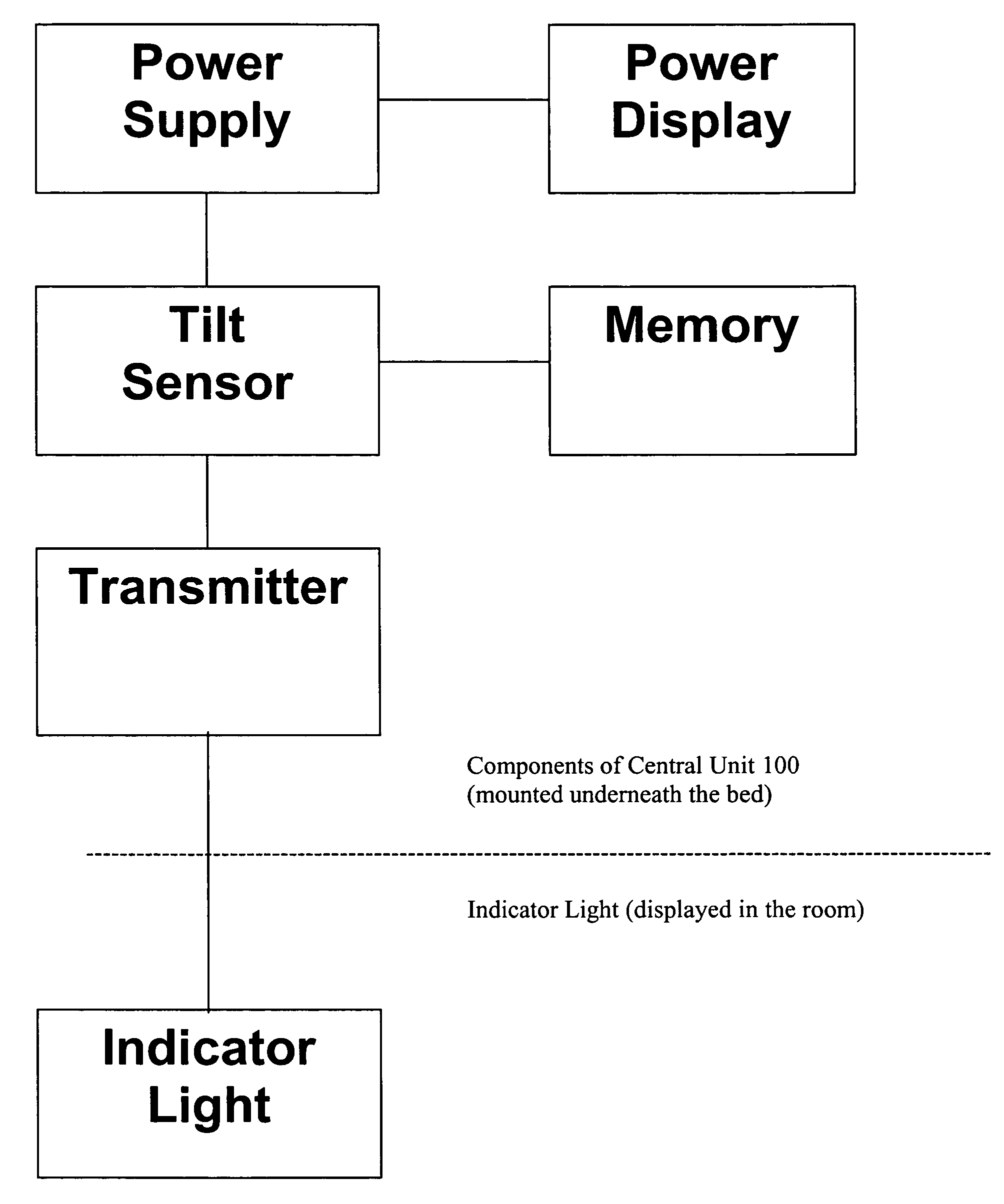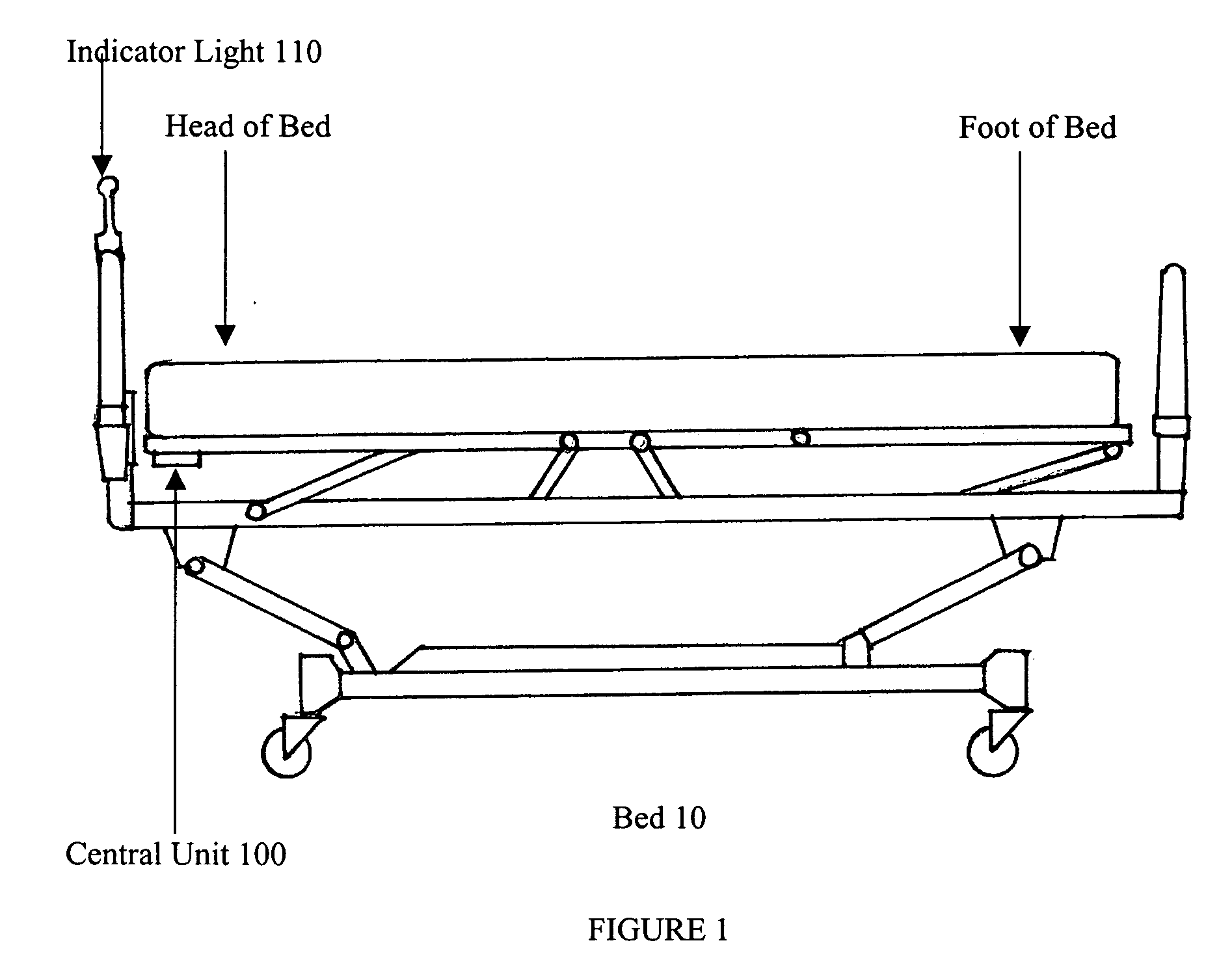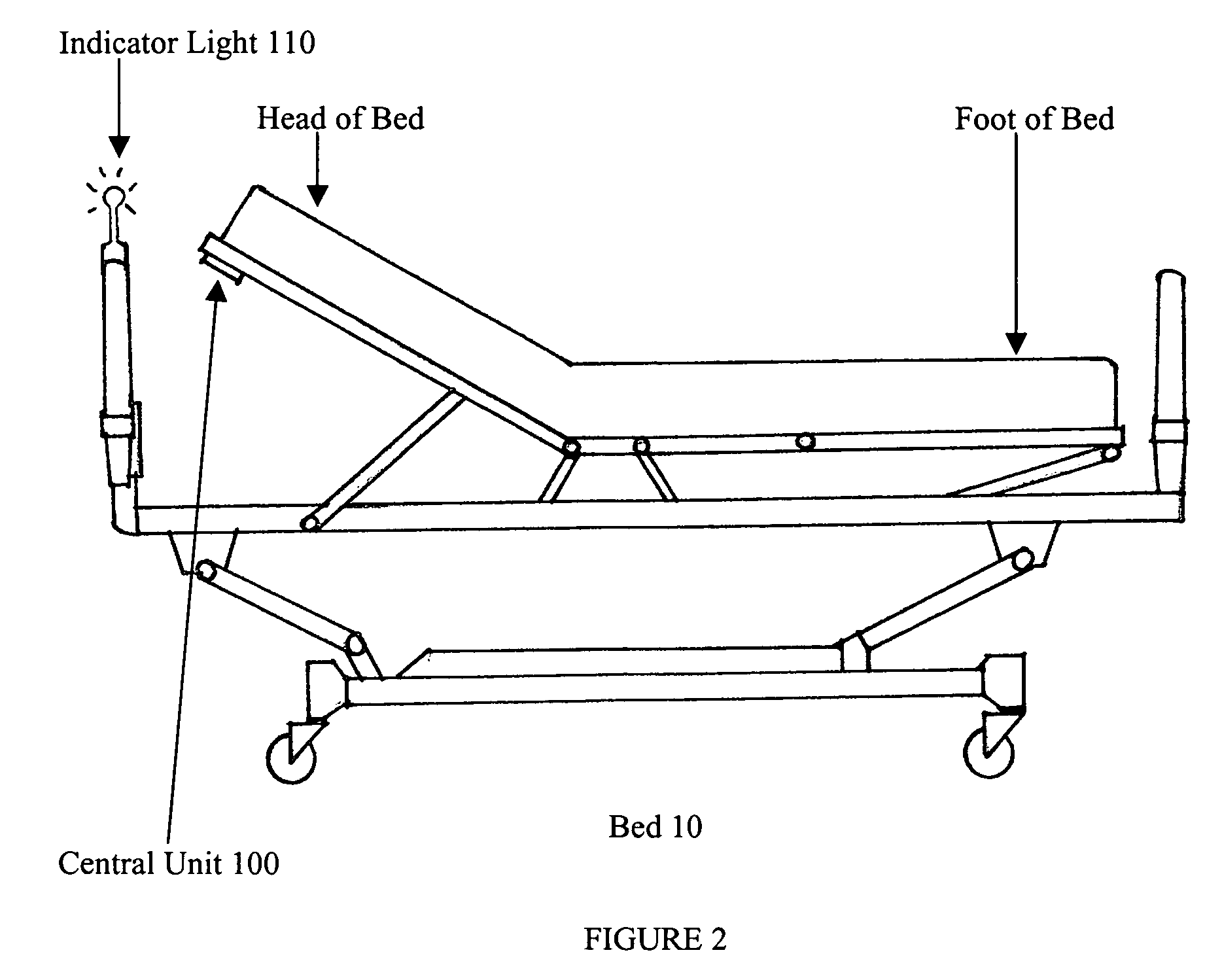Bed angle sensor for reducing ventilator-associated pneumonia
a technology of ventilator-associated pneumonia and angle sensor, which is applied in angle measurement, instruments, transportation and packaging, etc., can solve the problems of reducing the clinical course of almost 30% of patients undergoing mechanical ventilation, affecting the clinical outcome of patients, and prolonging the duration of mechanical ventilation
- Summary
- Abstract
- Description
- Claims
- Application Information
AI Technical Summary
Benefits of technology
Problems solved by technology
Method used
Image
Examples
Embodiment Construction
[0016] Referring now to FIG. 1, there is shown a typical hospital bed 10 that includes a frame that supports a patient support surface. In some instances, the patient support surface will be a mattress and in others it will be integrated with the frame. The present invention is useful with beds, but is similarly useful with other devices that support patients such as operation and examination tables, gurneys, carts and the like as well as transport structures built into transportation vehicles and the like.
[0017] Still referring to FIG. 1, in accordance with the present invention, a central unit 100 is mounted to the frame of the bed 10. As shown, the central unit 100 is mounted underneath the head of the bed, however, the central unit 100 can be mounted to the side of the frame and as explained below can be mounted in other locations and is preferably secured in place with either Velcro strips or clamps. It is possible that in some applications the bed will be frameless or have in...
PUM
 Login to View More
Login to View More Abstract
Description
Claims
Application Information
 Login to View More
Login to View More - R&D
- Intellectual Property
- Life Sciences
- Materials
- Tech Scout
- Unparalleled Data Quality
- Higher Quality Content
- 60% Fewer Hallucinations
Browse by: Latest US Patents, China's latest patents, Technical Efficacy Thesaurus, Application Domain, Technology Topic, Popular Technical Reports.
© 2025 PatSnap. All rights reserved.Legal|Privacy policy|Modern Slavery Act Transparency Statement|Sitemap|About US| Contact US: help@patsnap.com



